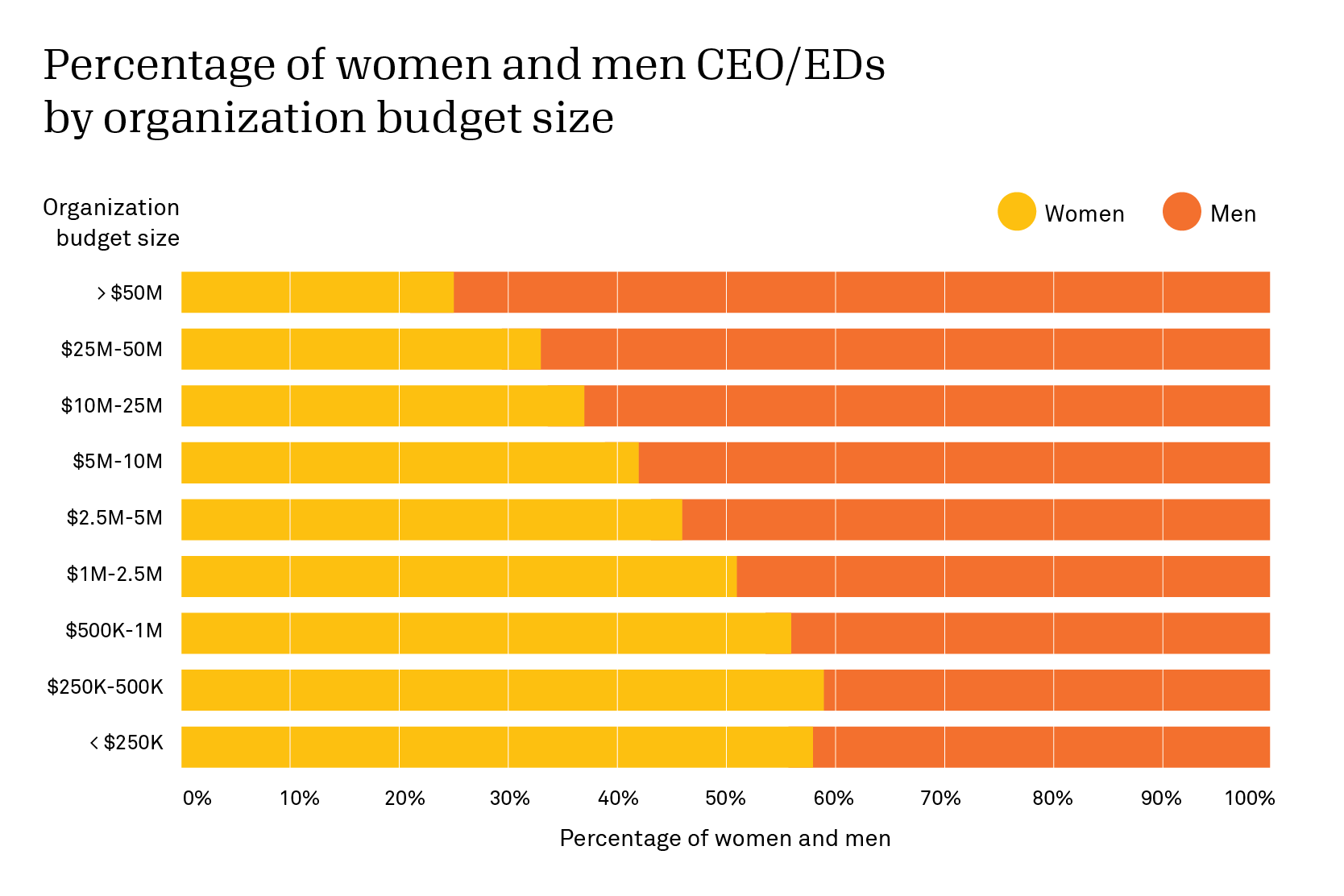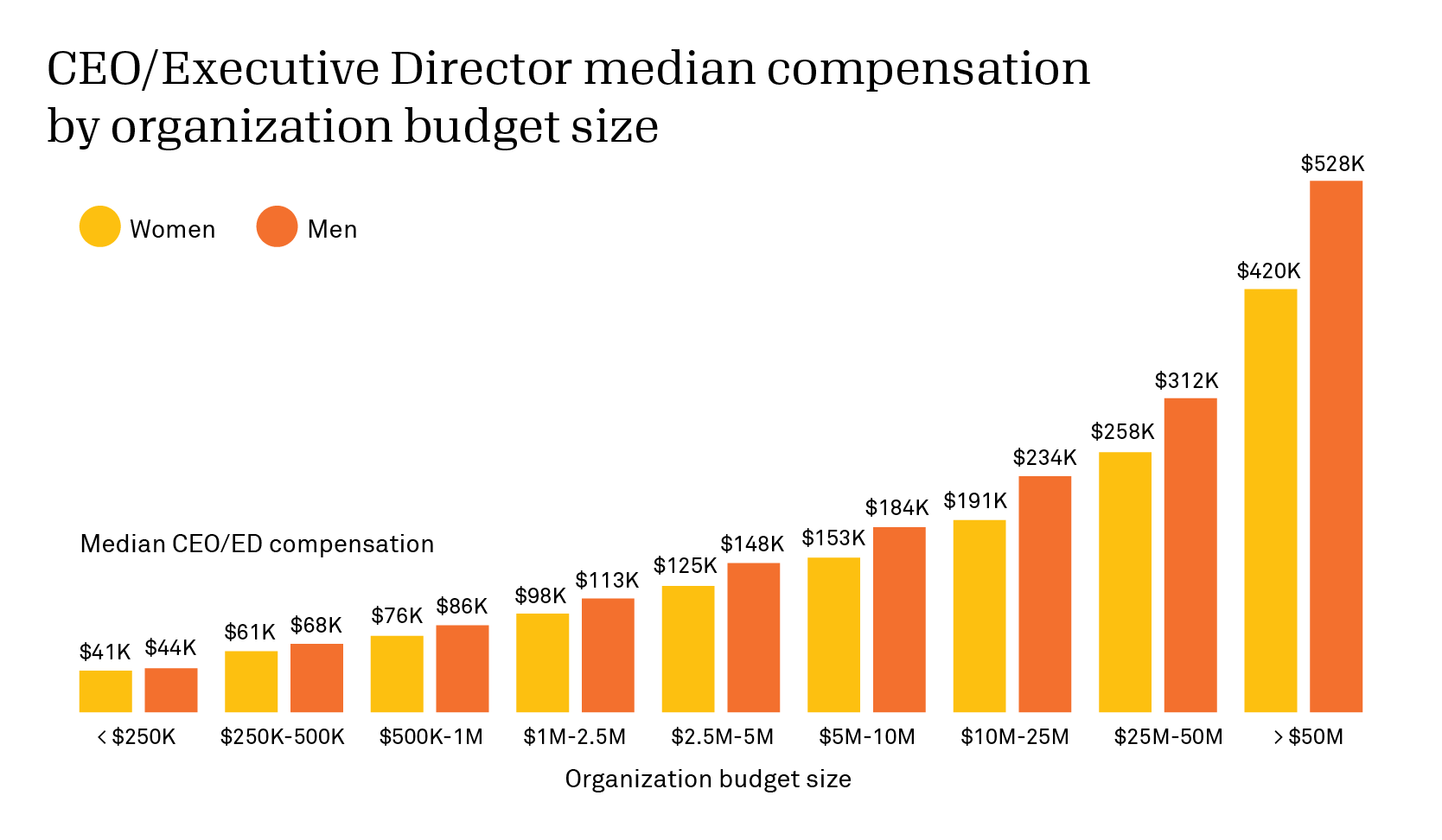June 8 is Equal Pay Day for nonprofit CEOs

Today (March 24), is Equal Pay Day. Although it may sound like a holiday, it is not a day of celebration. Instead, it is a day to increase awareness that we are not all paid equally for our labor. Specifically, it symbolizes how far into the year a woman must work (on average) to receive the same wage that a man received the previous year—i.e., this year, women had to work almost three months into 2021 to make the same salary that their male counterparts took home in 2020. This calculation translates into women making roughly 82 cents for every dollar made by men.
The origin and evolution of equal pay day
The origin of Equal Pay Day goes back to 1996, when the U.S. National Committee on Pay Equity founded the day to raise awareness about the gender wage gap. Since then, the trend has spread, and many countries across the world now also calculate and observe their own equal pay days. Because the date gets recalculated each year, it also serves to mark our collective progress toward closing the pay gap. Indeed, the date has steadily crawled earlier over time, and last year was the first time U.S. Equal Pay Day moved from April to March. (The U.S. Census Bureau estimates, however, that at the current rate, it will take until 2059 for the pay gap to disappear, so there is still a long way to go.)
In recent years, additional days have also been calculated to acknowledge that the gender wage gap is different across intersecting identities. For example, compared to fathers’ salaries, Mother’s Equal Pay Day is June 4, 2021. Moreover, compared to white men:
- Asian American and Pacific Islander (AAPI) Women’s Equal Pay Day is March 9, 2021.
- Black Women’s Equal Pay Day is August 3, 2021.
- Native American Women’s Equal Pay Day is September 8, 2021.
- Latinas’ Equal Pay Day is October 21, 2021.
Equal Pay Day for women nonprofit leaders
In recognition of this day, we decided to analyze Candid’s Nonprofit Compensation Report data to estimate Equal Pay Day for leaders of nonprofits. We followed the same methods[i] used to calculate other Equal Pay Days, but focused specifically on nonprofit organizational leaders (CEOs and executive directors) and total reportable compensation[ii]. Candid found that Equal Pay Day for women leading nonprofits is June 8, 2021. That translates into women leading nonprofits working 159 days for free—nearly half a year.
This result is somewhat surprising—and disheartening—given that women are well-represented in the nonprofit sector and that our analyses controlled for job title. Indeed, skeptics of this day have long argued that the gender pay disparity can be accounted for by women going into lower-paying fields and holding lower-paying job titles.
On the other hand, perhaps we should not be surprised. Numerous studies have found that the gender pay gap persists across industries and job roles (this interactive graph from the Wall Street Journal offers an interesting exploration of this trend). Additionally, Candid’s Nonprofit Compensation Report has shown a narrowing, but persistent, gender gap in nonprofit leader compensation over the years.
Compensation within different-sized organizations
To better understand this gender compensation gap, we also repeated our analyses according to organization size. This graph makes clear there are many more women CEO/EDs in smaller nonprofits, which tend to offer less compensation.

This reality, coupled with the fact that there are more small nonprofits in general, means that when we calculate Equal Pay Day separately for each organizational size, it moves quite a bit earlier in the year.
| Org budget size | Total number of nonprofit CEOs/EDs | Amount women nonprofit CEOs make/each $ men nonprofit CEOs make | Number of days women nonprofit CEOs work for free in 2021 | Nonprofit Equal Pay Day, 2021 | |||||||
|
|
|||||||||||
| < $250K | 17,634 | $0.95 | 21 | January 26 | |||||||
| $250K-$500K | 14,029 | $0.89 | 43 | February 16 | |||||||
| $500K-$1M | 15,341 | $0.88 | 51 | February 23 | |||||||
| $1M-$2.5M | 118,529 | $0.87 | 56 | March 2 | |||||||
| $2.5M-$5M | 10,936 | $0.85 | 66 | March 9 | |||||||
| $5M-$10M | 8,287 | $0.84 | 71 | March 16 | |||||||
| $10M-$25M | 7,216 | $0.81 | 83 | March 24 | |||||||
| $25M-$50M | 3,100 | $0.83 | 76 | March 23 | |||||||
| >$50M | 3,706 | $0.80 | 93 | April 6 | |||||||
The gender gap, however, does not vanish. Even accounting for organization size, women are by and large working several months effectively for free; and this reality gets worse as the size of the organization increases.

It is also worth reflecting on why women are better represented in smaller organizations than larger ones, as many of the reasons are likely rooted in gender bias.
Finally, it is important to note that Equal Pay Day is meant to offer a very simplistic and symbolic estimate of the gender wage gap. The calculation purposefully does not consider the myriad additional contextual factors that could be added to the analysis. If we controlled for factors such as industry, job title, work experience, etc., we could move Equal Pay Day to January (although doing so would conceal the fact that gender bias and gendered expectations play a role in such factors). Conversely, others have argued that if we included other earning factors such as labor force participation, hours worked, pensions, fringe benefits, and self-employment income, Equal Pay Day would be in October. But the point of Equal Pay Day is not about precision. It is about having a designated day to pause and realize that no one is arguing that Equal Pay Day was December 31, 2020.
_______________
[i] National Equal Pay Day for 2021 was calculated using the median wage for men and women employed full-time and year-round in 2019, according to U.S. Census Bureau data. These median wages are then used to calculate how many days into the new year women must work to reach pay parity. Each year, a Tuesday or Wednesday near this date is selected to observe Equal Pay Day. Because the day is symbolic, it may deviate slightly from the date calculated to accommodate holidays and other observances. We replicated this procedure using 2018 data from Candid’s 2020 Nonprofit Compensation Report to come up with the numbers and dates referenced in this post.
[ii] This data set draws from data reported on Forms 990 and 990-EZ. These are information returns filed annually with the Internal Revenue Service (IRS) by tax-exempt organizations. Organizations are instructed to supply compensation information only for officers, directors, trustees, and up to 20 key employees, so we were unable to calculate equal pay day for the average employee in the sector or for wages specifically. We therefore limited our analyses to the organizational leader and total compensation which includes wages but may also include other forms of compensation. For more information see Candid’s 2020 Nonprofit Compensation Report methodology. Although our current analyses did not include race (due to lack of data availability), our hope is that as more nonprofits provide demographic data through their nonprofit profiles on GuideStar, we will be able to report whether Equal Pay Day for women of color in the social sector follows the national trend of being later in the year in future analyses.







Dominic Alal, Kenya. says:
Within Communities, girls have to overcome many obstacles before they can realize their right to an education and skills. Before girls can attend school and benefit fully from their education a number of major Social Constraints have to be addressed. Girls after having limited Control of their futures. Early marriage is a reality for many in African Communities, where families wish for the Social and Economic benefits this brings in Globe. In Africa Country regions more than 48% of girls married by aged 14 to 17 years. Adolescence pregnancy always results in girls haunting their education in Informal Settlements around the World. Girls are also more likely to drop out of school because of their Domestic responsibility and are often discriminated against in terms of the quality of the Schools are send out and the Cost of parents are willing to pay for their education. Despite the Organizations being made Gender Equality is likely to take Generations to achieve the demands for better Education for girls, one Reinforces the other.